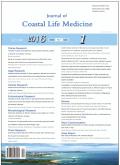Environmental effect of resort centres on the distribution of aquatic insect fauna in Ethiope River, Delta State, Nigeria
引用次数: 2
Abstract
Aquatic insects are macroinvertebrates that live on or associated with bottom of freshwater bodies[1]. Their pivotal role in nutrients circulation cannot be over emphasized in aquatic environment. Aquatic invertebrates are the link between unobtainable nutrients in detritus and protein materials in fishes[1,2]. Their role in fasttracking the breakdown of putrefying organic material into smaller inorganic forms such as nitrate and phosphate is also well documented[3]. These nutrients are usually utilized by aquatic plants in the ecosystem. Aquatic insects commonly used as biological indicator have been effective in monitoring environmental pollution and water quality[4,5]. The sensitivity and forbearance to environmental perturbation exhibited by aquatic insects vary considerably among orders and species. The composition and distribution of aquatic insect at any given point in a water course is a reflection of its water quality[5]. This makes aquatic insect a valuable tool in pollution and water quality assessment. Species richness of aquatic insects can be influenced by physicochemical parameters [temperature, dissolve oxygen (DO), biochemical oxygen demand (BOD) and turbidity] of water. The structural composition of insect communities has been the focus of many researches on aquatic system. The mere presence or absence of an individual of a species provides little information of ARTICLE INFO ABSTRACT度假中心对尼日利亚三角洲州埃塞俄比亚河水生昆虫区系分布的环境影响
水生昆虫是大型无脊椎动物,生活在淡水水体底部或与之相关。在水生环境中,它们在养分循环中的关键作用再怎么强调也不为过。水生无脊椎动物是鱼类碎屑中不可获得的营养物质与蛋白质物质之间的纽带[1,2]。它们在快速追踪腐烂的有机物质分解成较小的无机形式(如硝酸盐和磷酸盐)方面的作用也得到了充分的证明。这些营养物质通常被生态系统中的水生植物所利用。水生昆虫常被用作生物指标,在环境污染和水质监测中发挥着重要作用[4,5]。水生昆虫对环境扰动的敏感性和耐受力在不同目、不同种之间差别很大。水生昆虫在河道中任意一点的组成和分布是该水域水质状况的反映。这使得水生昆虫成为污染和水质评价的重要工具。水体的物化参数[温度、溶解氧(DO)、生化需氧量(BOD)和浊度]会影响水生昆虫的物种丰富度。昆虫群落的结构组成一直是水生系统研究的热点。一个物种的个体的存在或不存在提供了很少的信息
本文章由计算机程序翻译,如有差异,请以英文原文为准。
求助全文
约1分钟内获得全文
求助全文

 求助内容:
求助内容: 应助结果提醒方式:
应助结果提醒方式:


